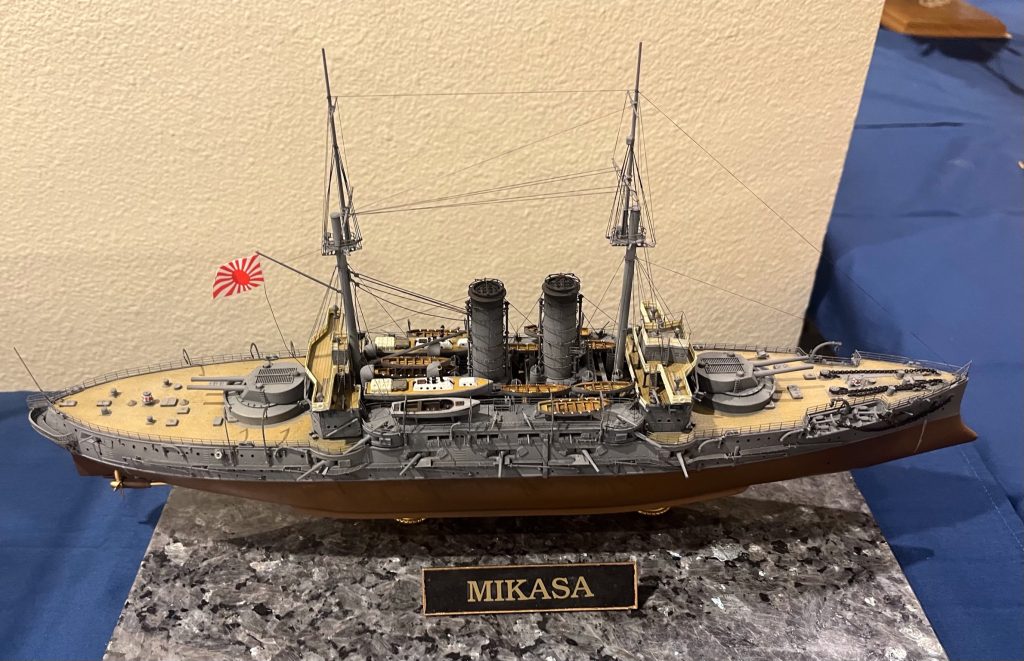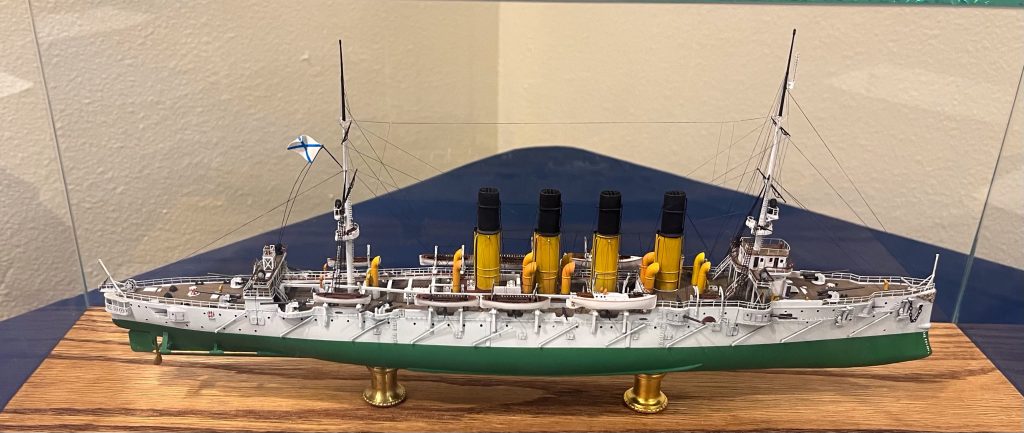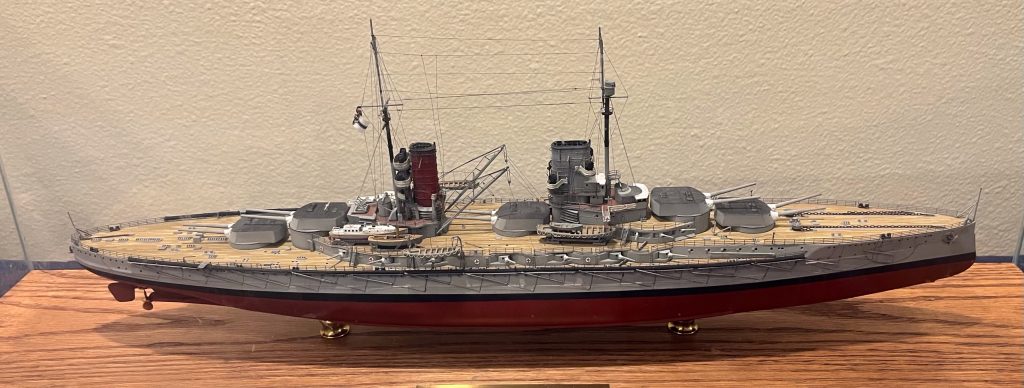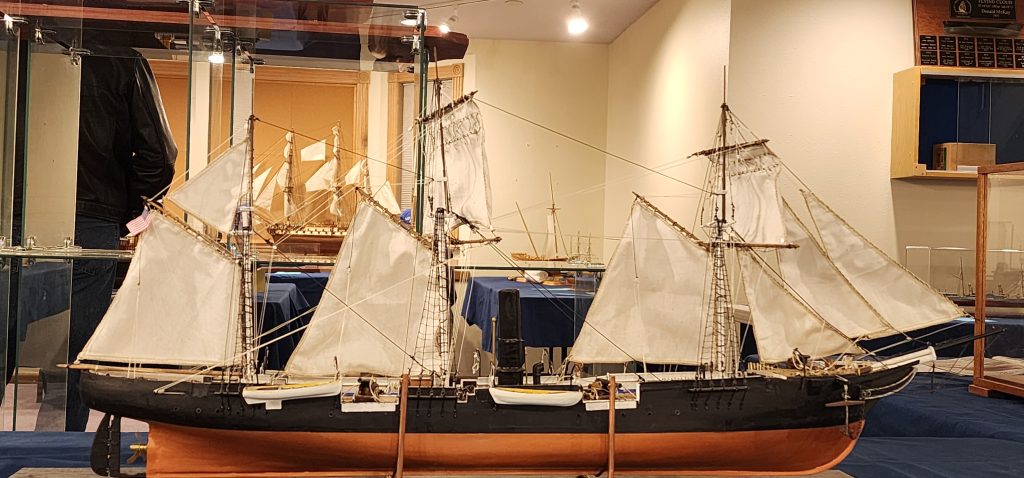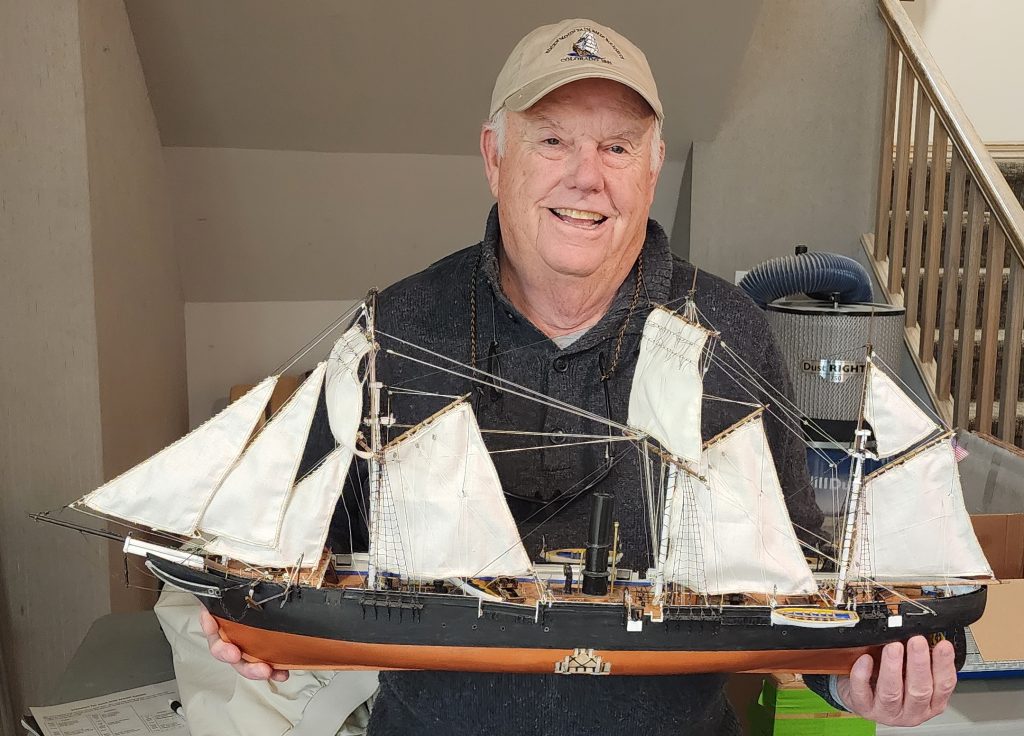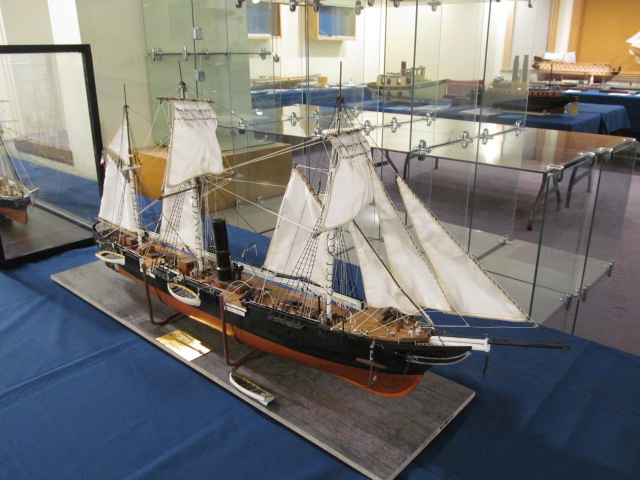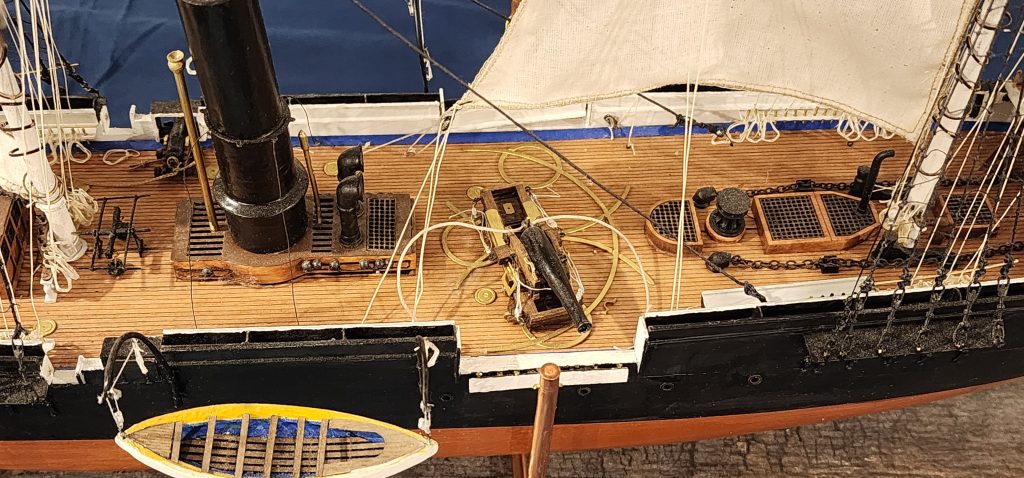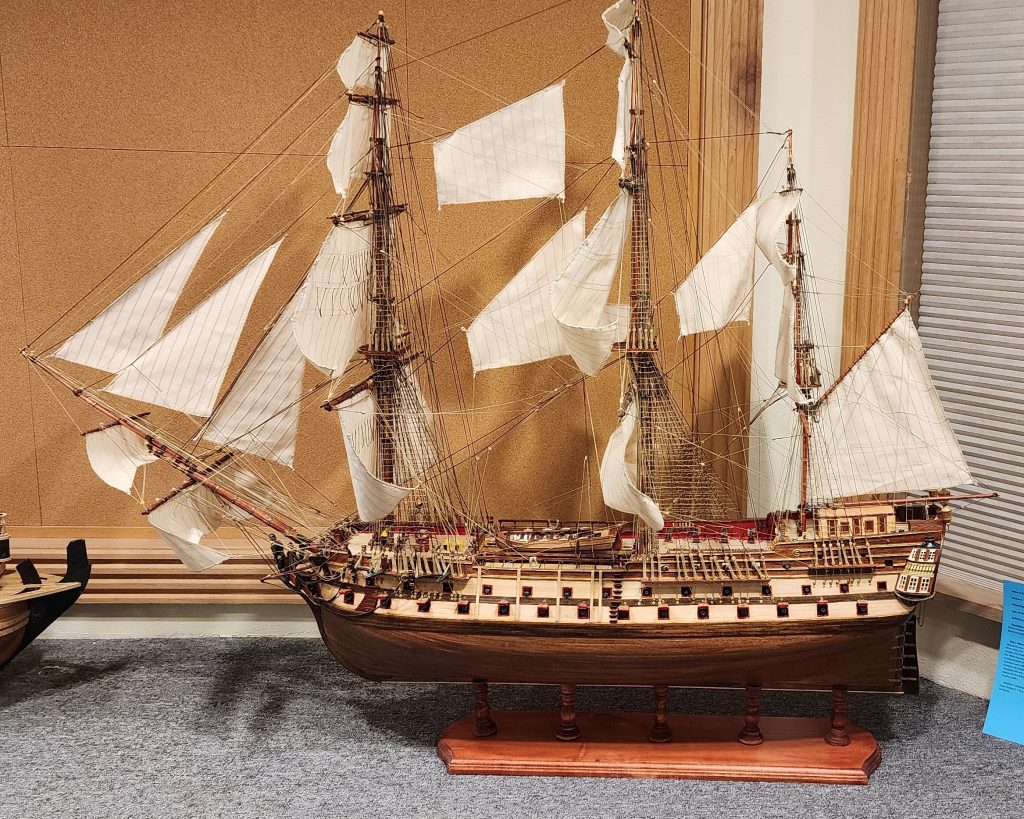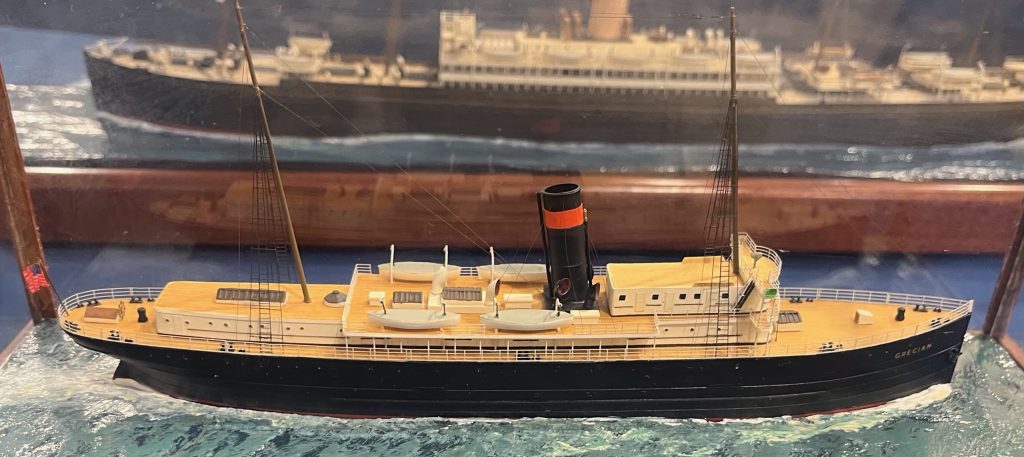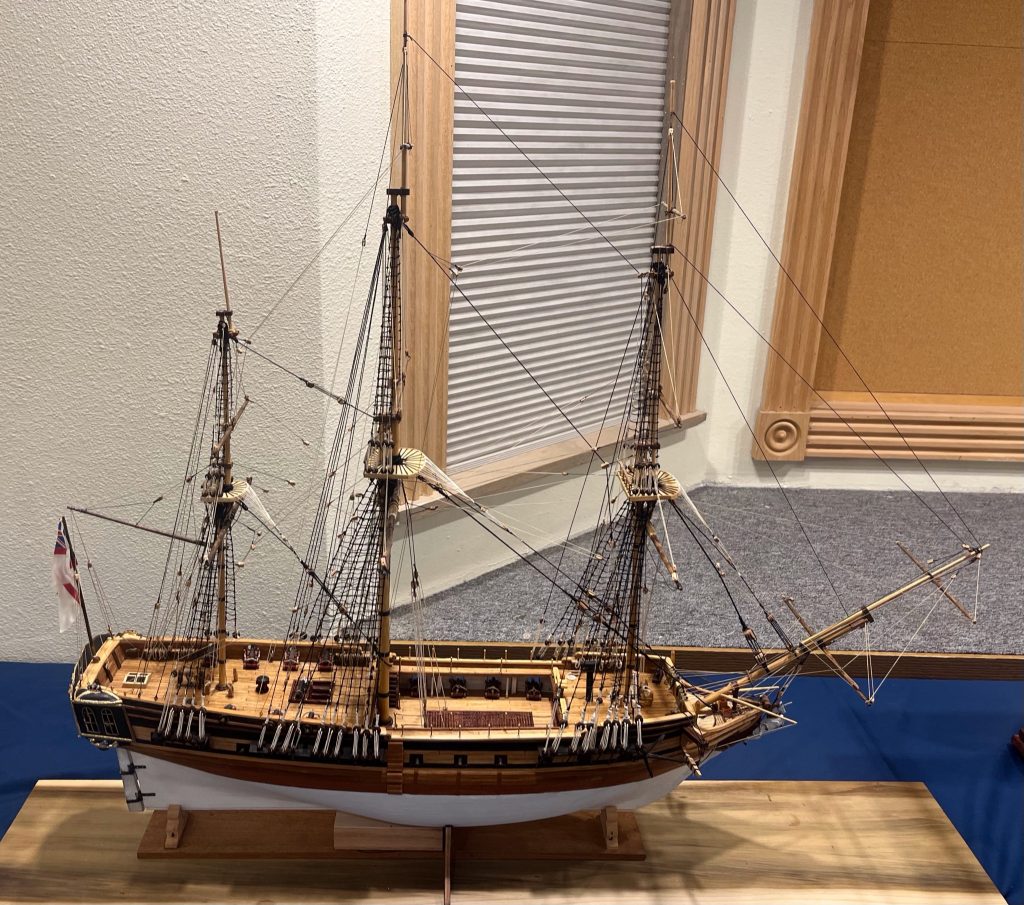
Exhibit: October 2023
Name of Model: HMS Unicorn
Modeler’s Name: Jay McKeown
Period Ship Sailed: 1750’s
Type of Model: Wooden plank on bulkhead
Build Time: 2 years
Scale: 1/75
Ship’s History: HMS Unicorn is a surviving sailing frigate of the successful Leda class, although the original design had been modified by the time that the Unicorn was built, to incorporate a circular stern and “small-timber” system of construction. Listed as part of the National Historic Fleet, Unicorn is now a museum ship in Dundee, Scotland, United Kingdom. She is the oldest ship in Scotland, one of the oldest ships in the world, and one of the last intact warships from the age of sail. HMS Unicorn was built in peacetime at Chatham Dockyard, Kent and launched in 1824. This was a transitional period for shipbuilding, as suitable timber was becoming more difficult to obtain, and iron was increasingly available. Under the direction of Sir Robert Seppings, then Surveyor of the Royal Navy, Unicorn was built with diagonal riders made with iron straps and iron “knees” that strengthened the hull.

